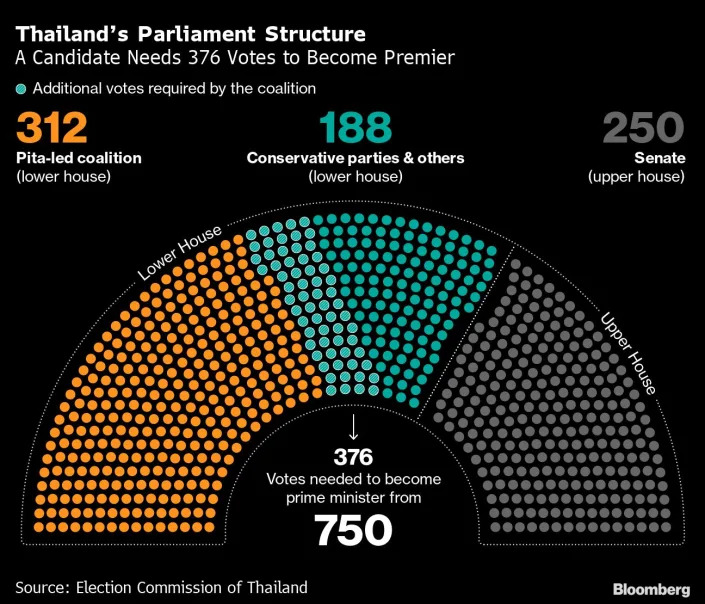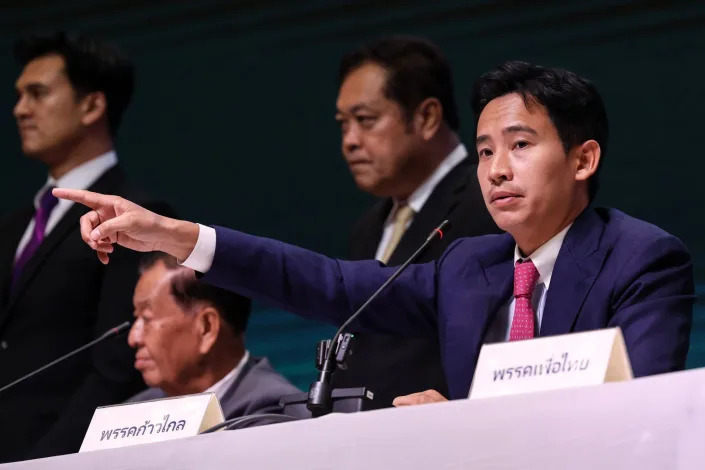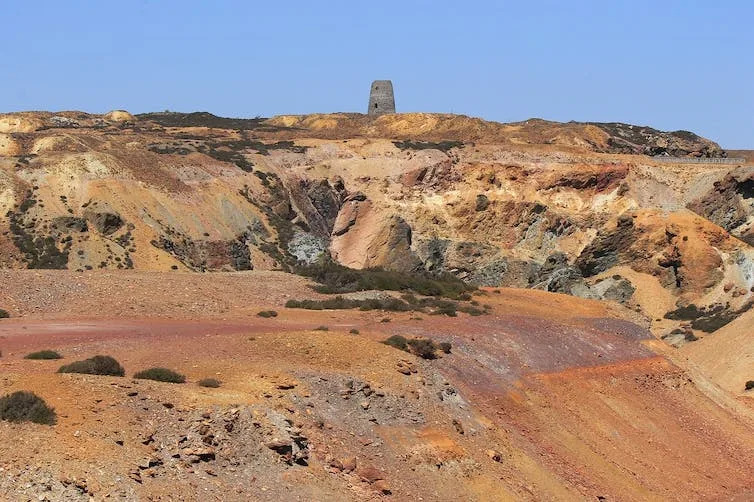‘The government is poised to take a bath on its student loan portfolio’
Alicia Adamczyk
Tue, June 27, 2023
Federal student loan payments will restart in October after more than a three-year break. But the government will never see most of the $1.8 trillion borrowers currently owe, with or without President Joe Biden's widespread forgiveness plan.
That's according to a new report from the Jain Family Institute, a nonpartisan research organization, that analyzed the credit reports of 1 million people ages 18 to 35 with student loan balances between 2009 and 2019. In the report titled The Student Debt Crisis Is a Crisis of Non-Repayment, the author, Marshall Steinbaum, a senior fellow in higher education at the organization, writes that because of a litany of factors, "much of outstanding federal student loan balances aren’t ever going to be repaid."
"The government is poised to take a bath on its student loan portfolio over the long term, even as that portfolio expands in size every year as the higher education system sucks up more federal funding," the report reads.
Why is that? According to Steinbaum, the ever-increasing cost of college combined with decreased state funding of higher education, stagnant wages, and more higher education requirements to attain any job at all means more and more people need to take on more and more student loan debt to live a middle-class life. But with wages not keeping up with the cost of higher education, more borrowers are unable to repay their balances, carrying the debt longer and "impairing economic well-being for a widening and diversifying swath of the population, inhibiting savings, increasing precarity, and draining the very incomes the student debt was supposed to increase."
This has happened in good economic cycles and in bad. "What we’ve considered to be economic prosperity of the last 10 years, prior to the pandemic, was in fact economically punishing to younger cohorts forced through the wringer of increasingly costly higher education and into a labor market characterized by stagnant wages and deteriorating job ladders," Steinbaum writes. Even in "normal" times—i.e., not in the midst of a worldwide pandemic and economic downturn—borrowers have trouble repaying their loans.
The three-year payment pause has been a temporary reprieve from ever-increasing loan balances and defaults and delinquencies. But Steinbaum writes that once payments resume in October, all of the financial progress borrowers made over the past three-plus years—declining balances, higher credit scores, increased savings, etc.—will be reversed. As other research has found, including the Biden administration's own, delinquencies and defaults will increase once the pause ends.
Many households simply will not be able to afford another multi-hundred-dollar bill each month, on top of inflated prices, rising interest rates, and other economic uncertainty. Other research has found that it is likely to lead to higher credit card debt (in fact, that is already happening), even as households pull back their spending.
The "single most striking finding" from the report, according to a summary, "is that the repayment pause actually resulted in the highest student loan balances decreasing for the first time ever," likely due to interest rates being set at zero for its duration. But that will end when interest starts accruing again in September.
A new income-driven repayment (IDR) plan proposed by the Biden administration could exacerbate the non-repayment. The plan, which has not taken effect yet, will allow more borrowers to pay less of their income toward their loans each month and reach forgiveness faster, meaning they will repay less throughout the life of their loan. That is, if borrowers know it exists.
"The idea that borrowers will transition smoothly from the repayment pause to enrollment in the new IDR plan is far easier said than done," Steinbaum writes. "A much more likely outcome is once the pause is rescinded, borrowers fall through the cracks."
And the new IDR plan could have the effect of actually increasing tuition and other costs, according to the report, as well as other higher education researchers.
"Universities can truthfully tell would-be students that the debt never really needs to be repaid," Steinbaum writes.
Alicia Adamczyk
Tue, June 27, 2023
Federal student loan payments will restart in October after more than a three-year break. But the government will never see most of the $1.8 trillion borrowers currently owe, with or without President Joe Biden's widespread forgiveness plan.
That's according to a new report from the Jain Family Institute, a nonpartisan research organization, that analyzed the credit reports of 1 million people ages 18 to 35 with student loan balances between 2009 and 2019. In the report titled The Student Debt Crisis Is a Crisis of Non-Repayment, the author, Marshall Steinbaum, a senior fellow in higher education at the organization, writes that because of a litany of factors, "much of outstanding federal student loan balances aren’t ever going to be repaid."
"The government is poised to take a bath on its student loan portfolio over the long term, even as that portfolio expands in size every year as the higher education system sucks up more federal funding," the report reads.
Why is that? According to Steinbaum, the ever-increasing cost of college combined with decreased state funding of higher education, stagnant wages, and more higher education requirements to attain any job at all means more and more people need to take on more and more student loan debt to live a middle-class life. But with wages not keeping up with the cost of higher education, more borrowers are unable to repay their balances, carrying the debt longer and "impairing economic well-being for a widening and diversifying swath of the population, inhibiting savings, increasing precarity, and draining the very incomes the student debt was supposed to increase."
This has happened in good economic cycles and in bad. "What we’ve considered to be economic prosperity of the last 10 years, prior to the pandemic, was in fact economically punishing to younger cohorts forced through the wringer of increasingly costly higher education and into a labor market characterized by stagnant wages and deteriorating job ladders," Steinbaum writes. Even in "normal" times—i.e., not in the midst of a worldwide pandemic and economic downturn—borrowers have trouble repaying their loans.
The three-year payment pause has been a temporary reprieve from ever-increasing loan balances and defaults and delinquencies. But Steinbaum writes that once payments resume in October, all of the financial progress borrowers made over the past three-plus years—declining balances, higher credit scores, increased savings, etc.—will be reversed. As other research has found, including the Biden administration's own, delinquencies and defaults will increase once the pause ends.
Many households simply will not be able to afford another multi-hundred-dollar bill each month, on top of inflated prices, rising interest rates, and other economic uncertainty. Other research has found that it is likely to lead to higher credit card debt (in fact, that is already happening), even as households pull back their spending.
The "single most striking finding" from the report, according to a summary, "is that the repayment pause actually resulted in the highest student loan balances decreasing for the first time ever," likely due to interest rates being set at zero for its duration. But that will end when interest starts accruing again in September.
A new income-driven repayment (IDR) plan proposed by the Biden administration could exacerbate the non-repayment. The plan, which has not taken effect yet, will allow more borrowers to pay less of their income toward their loans each month and reach forgiveness faster, meaning they will repay less throughout the life of their loan. That is, if borrowers know it exists.
"The idea that borrowers will transition smoothly from the repayment pause to enrollment in the new IDR plan is far easier said than done," Steinbaum writes. "A much more likely outcome is once the pause is rescinded, borrowers fall through the cracks."
And the new IDR plan could have the effect of actually increasing tuition and other costs, according to the report, as well as other higher education researchers.
"Universities can truthfully tell would-be students that the debt never really needs to be repaid," Steinbaum writes.
“Debt is a lifetime drag”
The Jain Family Institute's report looked at student loan demographics, and found that student debt-to-income ratios (in other words, having an increasing amount of debt compared to one's income) has grown the most for non-white and poor communities for the past decade. In turn, that means non-repayment has been getting worse for non-white borrowers.
That is hardly a new finding; in fact, the Biden administration names advancing racial equity among borrowers as one of the reasons for his widespread forgiveness program, which would cancel $10,000 to $20,000 in federal student loan debt for most borrowers.
The outcome of that program is dependent on a decision from the U.S. Supreme Court, expected this week. If the court strikes down the program, the Jain report finds non-repayment would be exacerbated.
As Steinbaum writes, this student loan burden has hit millennials especially hard compared to prior generations, but until something changes, Gen Z and future generations can look forward to the consequences, too. That includes delayed marriages, reduced childbearing, less entrepreneurship, and decreased retirement security, among others.
"The debt is a lifetime drag on social mobility," Steinbaum writes.



















